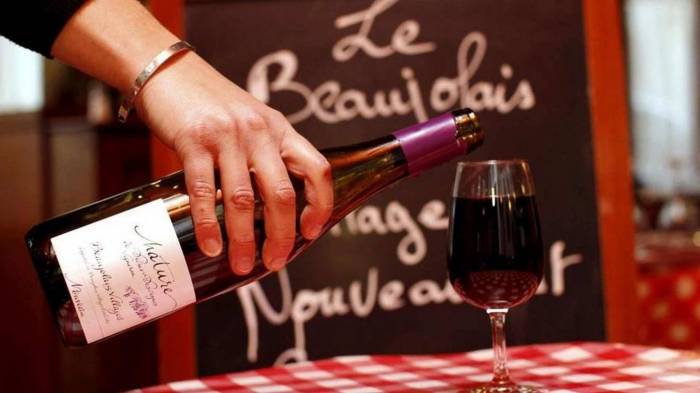Beaujolais Nouveau Sales Drop Another 10% Despite High-Quality 2025 Vintage
French and export markets continue to shrink as producers struggle to match supply with falling global demand for the iconic wine.
2025-10-17

The Beaujolais region in France is facing another year of declining demand for its famous Nouveau wines, despite a small but high-quality harvest in 2025. Producers report that they are able to make about 120,000 hectoliters of Beaujolais Nouveau this year, but sales forecasts remain below 105,000 hectoliters, continuing a downward trend seen in recent years.
The market for Beaujolais Nouveau has been shrinking steadily in France and key export countries like Japan and the United States. French distributors estimate the market has eroded by about 10 percent compared to last year. This decline comes even as the quality of the 2025 vintage is considered excellent, with yields averaging 32 hectoliters per hectare for Beaujolais and 28 hectoliters per hectare for Beaujolais Villages. Some vineyards produced as little as 15 hectoliters per hectare, while others reached up to 45.
David Ratignier, vice president of the Organisme de Défense et de Gestion (ODG) for both appellations, explained that while the region can produce a significant volume of primeur wine, there simply is not enough demand to match it. “We are able to produce 120,000 hectoliters of primeurs. But there isn’t a market for all of it,” he said.
Sébastien Kargul, vice president of the interprofessional body representing wine merchants, noted that the decline in Beaujolais Nouveau sales is an annual occurrence. He pointed out that large French retailers have shown less interest this year, and the situation may be even more challenging in export markets. In Japan, changing consumer preferences—such as a growing interest in white wines—have led some importers to withdraw from the market. In the United States, tariffs have made it harder for importers to maintain their previous levels of business.
Olivier Richard, a wine broker in the region, confirmed that as of mid-October, most direct sales from producers had ended but some late orders and restocking were still possible. He estimated the overall market erosion at around 10 percent. “Buyers from large retailers who didn’t have successful wine fairs have been cautious,” he said. “Our merchant clients are also facing difficulties with exports.”
Despite these challenges, some producers remain optimistic about traditional sales channels such as specialty wine shops and restaurants. Kargul observed that after years of decline, these markets now appear stable. He believes that innovative offerings from Beaujolais producers—unique wines that give consumers a preview of the new vintage—are helping to maintain interest among wine merchants and restaurateurs.
Ratignier also reported positive feedback from events held in the vineyards themselves. “People want to come visit us and taste our wines,” he said. “We’re going to build on that enthusiasm, especially since the quality this year is very good.”
Richard agreed with this assessment of the vintage’s quality: “It’s a very beautiful vintage that should be well received—wines with good color, fruitiness, suppleness and roundness.”
In light of weak demand, some merchants had hoped for lower prices to stimulate sales. However, prices have remained steady compared to last year: around €295 per hectoliter for Beaujolais Villages and €280 per hectoliter for generic Beaujolais. Kargul emphasized that maintaining these prices reflects a collective effort by all players in the region—including merchants who rely heavily on primeur wines—to support Beaujolais as a whole.
The focus now is on promoting all wines from the region and ensuring unity among producers and merchants during this difficult period for Beaujolais Nouveau.
Founded in 2007, Vinetur® is a registered trademark of VGSC S.L. with a long history in the wine industry.
VGSC, S.L. with VAT number B70255591 is a spanish company legally registered in the Commercial Register of the city of Santiago de Compostela, with registration number: Bulletin 181, Reference 356049 in Volume 13, Page 107, Section 6, Sheet 45028, Entry 2.
Email: [email protected]
Headquarters and offices located in Vilagarcia de Arousa, Spain.